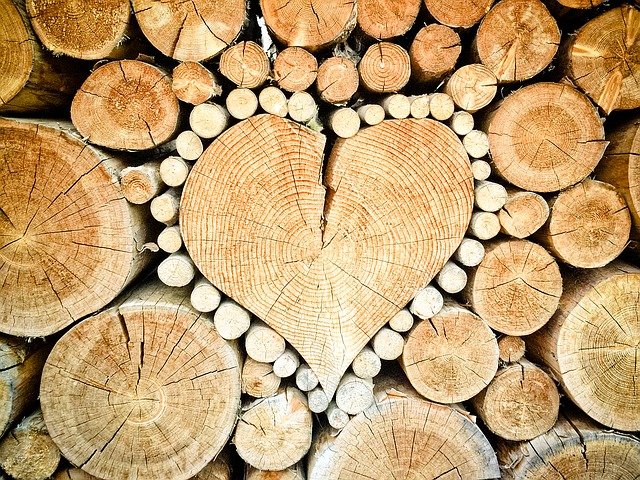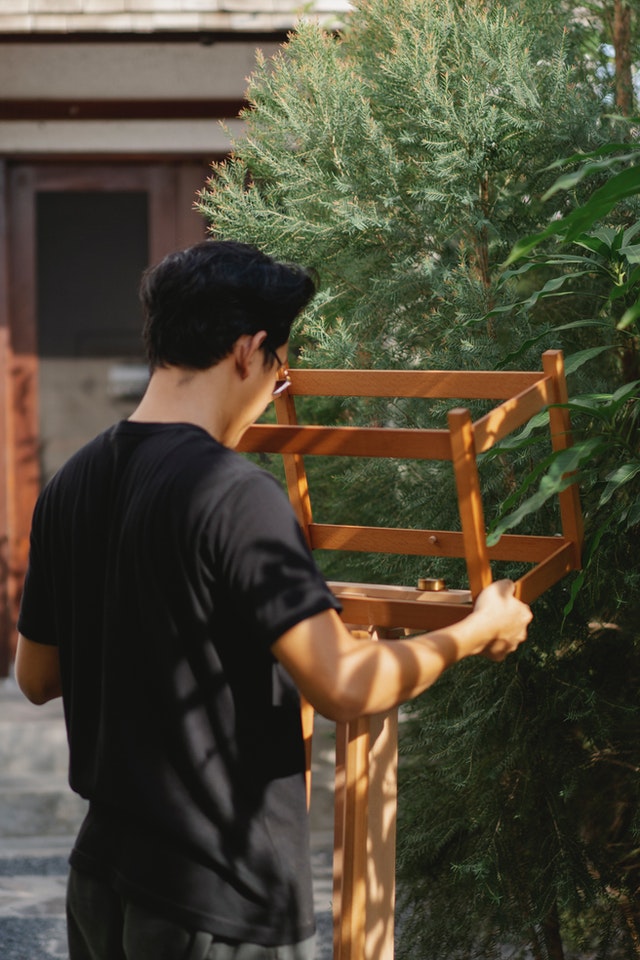Lumber
This is an excerpt from the Book called “Carpentry “ by Des Moines, Iowa. Continue reading to learn more about Lumber, thanks to the author.
Wood, said Frank Lloyd Wright, “is universally beautiful to man. Man loves his association with it, likes to feel it under his hand, sympathetic to his touch and his eye. “But if you’re trying to build something out of checked and twisted lumber, your association may not seem so favorable. Here’s how to choose your lumber so it suits the job.
The Nature Of Lumber
Pound for pound, wood is almost as strong as steel: yet it’s easy to cut and shape. And, it has a warm, natural beauty that no other material can match.
Of course, each piece of lumber was once part of a tree. The characteristics of the wood you buy depend on the type of tree it came from, how it was cut, and how it was handled.
Vertical And Flat Grain:
The best lumber comes from old trees, with fewer knots than younger trees, and that have tight rings for a close grain in the lumber. Certain species produce wood that is resistant to warping and rot, while others do not. Much lumber sold today comes from quick-growth tree, so the grain will not be tight and the boards will develop twists if not stored and installed carefully.
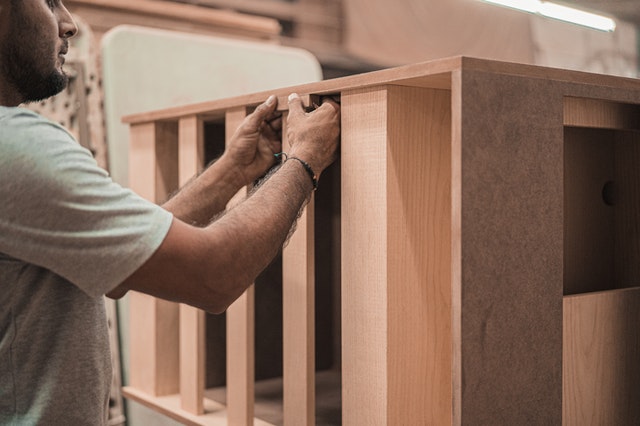
These are two basic methods of cutting wood:
- Plain sawing, in which the boards are cut roughly parallel to the growth rings, produces flat-grained wood, with a pattern of widely spaced wavy lines, V shapes, and ovals. This lumber can be strong, but it will be prone to cupping and warping.
- Quarter sawing-cutting perpendicular to the ring produces vertical grain in closely spaced parallel lines. As long as it has few knots, this type is stronger and more stable than plain-sawn (flat-grained) lumber, making it more desirable for finish work. But if there is a spike-shaped knot extending across much of the width of a board, it will be seriously weakened. Quartersawn lumber tends to be expensive because it often comes from old-growth trees and much of the log becomes sawdust and waste wood.
Wood Movement And Moisture: Wood changes with the climate. Freshly cut wood shrinks until it is dry, and dry lumber expands and contracts with changes in humidity. However, given its longitudinal grain, wood can change significantly in width but hardly at all in length.
Most lumber is air-dried after it is cut. This removes much of the moisture, but leaves enough that wood may shrink, bow, and twist after you buy it. For framing and rough work, air-dried lumber is adequate, as long as you stack the wood flat and fasten it in place before it has a chance to move.
Kiln-drying removes more moisture so the boards are more stable. It is often worth the extra cost, especially when the wood will be used for cabinetry or other finish carpentry.
Wood used for finish carpentry should contain no more than 19 percent moisture, often indicated by “S-DRY” on the lumber stamp. For exacting carpentry, use lumber marked MC-15, meaning it has 15 percent or less moisture content. Cabinetry-and furniture-making call for wood graded MC-12 or drier.
Rot And Termites: wood has two main enemies-rot and bugs. Rot (even “dry rot”) occurs for the most part when wood remains damp for a long time. Boards in contact with the ground or with the house’s foundation are at greatest risk; unfortunately, these boards are usually hard to replace. Termites and other wood-eating insects are often attracted to moist wood. They usually live in the ground outside your house, and tunnel in through your structure to get food. “Secondary infestations” occur when there is enough moisture in the wood for them to reside as well as eat there.
Protect against rot and bugs by using pressure-treated lumber wherever moisture may be a problem. It should have a CCA rating (a measure of its preservative content) of at least. 40 or be labeled “ground contact.” To protect structural wood from damage, take steps to ensure that it can dry out; sometimes just sweeping away dirt can do the trick. You can also brush on sealer that contains preservative and insecticide.
Watch For Defects
If you call the lumberyard and order boards to be delivered, you’ll probably get some defective materials. Go there and choose the boards yourself, one by one. Perfect lumber is uncommon. However, you want to make sure your wood does not have problems that will ruin your project. Pick up each board and sight down its length to look for twists, bows, cups, and crooks. Then inspect the surfaces that will be showing for checks, shakes, wane, and knots.
Checks: Splits that run perpendicular to the grain are called checks. They are the result of shrinkage; they usually show up near the ends of boards, where the wood dries out fastest. These flaws are a cosmetic-not a structural-problem.
Shakes: These splits following the grain are a serious concern. They will probably grow larger. Do not use boards with splits that extend halfway or more into the thickness of the board.
Knots: A tight knot in the center of a board may actually make it stronger because the wood tissue around it is dense. A large knot at the edge of a board, however, can cause the board to become bent at that point, even if it looks straight when you buy it. Loose knots will probably fall out in time.
Wane: A wane is caused by cutting the board too close to the bark. It is a blemish; boards with wane can still be very strong.
Twist: These can cause problems. If you use a twisted board as part of a header-over a door frame, for instance-one or more corners will stick out and cause lumps in the wall finish. For studs, joists, and rafters, minor twists can usually be eliminated by installing blocking and by strategic fastening.
Crown: As you sight down the board, the high part in the middle is the crown. When framing a wall, make all the crowns face the same way. When installing joists or rafters, always put the crown side up. Badly crowned lumber should be rejected or cut into shorter pieces.
Bow: Lumber that’s bowed is usually not a problem unless the bow is very pronounced. Bowed studs or joists can be straightened by installing pieces of blocking. In some cases, the bow can be taken out of a board when the finish wood is attached to it.
Cup: Cupped wood does not create a structural problem, but it can look ugly. If the cup is severe, the piece may crack when you fasten it in place. Vertical-grain wood that is not kiln-dried may develop a cup after you buy it.
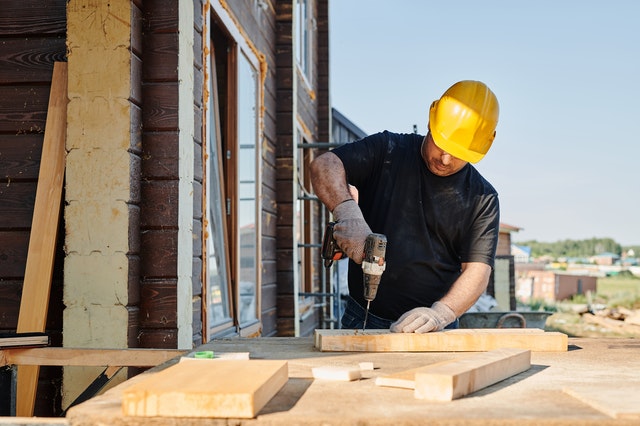
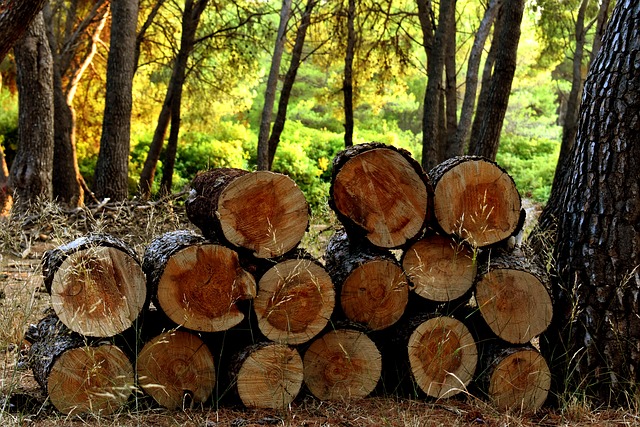
Lumber Grades
There are many grading associations across the country, each with its own set of rules, so a certain grade may mean different things in different places. Some chain stores have their own designations. (For example “appearance board” may refer to very weak hem/fir that will twist severely unless you fasten it almost immediately.) So, the following information is only a general guide.
Structural Lumber: Wood commonly used for framing is usually either Douglas fir or hem/fir. Smaller pieces-2×4s and 4×4s-are graded differently than larger sizes. Utility grade is the lowest and is not strong enough for actual framing. Use it for blocking, non-structural partitions, and furring. Standard grade is the most common; it is suitable for light framing. Construction grade is even stronger and has fewer defects. Stud-grade 2×4s are usually somewhere between standard and construction grades in quality and are expressly used as studs. Larger sizes of framing lumber-2×6 and up-have three basic grades. Number 2 is suitable for most structural purposes; although it may have large knots and be twisted or cracked, it will be strong. Number 1 has straighter grain and large knots, so it looks better and is stronger than grade 2. Structural or select boards are the strongest and are virtually free of knots.
Finish Lumber: Grading systems here are more varied. Some associations use a letter system, with A being the highest grade and D the lowest. Others use numbers: Number 3 is suitable for rough only; Number 2 has plenty of knots but is good enough for shelving; and Number 1 is nearly knot-free. Clear lumber has no knots and will always be expensive.
Finish lumber is graded mainly for appearance, so the number is not as important as whether it looks good to you. You may choose to save money by buying a cheaper grade and paint it after filling holes and sanding it. If you want a rustic look, you may seek out a lower grade.
Hardwood
The price of these slower-growing woods-such as birch, maple, and oak-can be high, so it pays to buy carefully. The more expensive woods are milled to save every possible square inch, so they come in varying sizes. Sometimes they are smooth on only two sides, leaving the edges rough; this is called S2S. You may find it difficult to plane the edges smooth, so ask the lumberyard if they can do it for you.
Hardwoods have their own grading systems. FAS (firsts and seconds) will be straight and knot-free. Select boards have defects on one side only. Number 1 common has tiny, tight knots; Number 2 common has larger knots.
Metal Framing
Although it may not seem like carpentry, metal framing has some distinct advantages. Steel studs are inexpensive, light, and strong; they won’t warp, shrink, or rot; and they save trees. Because they are fire resistant, they are required for most commercial installations.
Steel studs are made of C-shaped, sheet-metal channels with holes for running electrical and plumbing lines. They’re available in different weights to satisfy different load-bearing requirements. Tracks are used for the top and bottom plates and for headers.
All connections are made by driving special self-tapping screws, using a drill that has a magnetic screwdriver bit. Use a felt-tipped pen to mark pieces to size and cut with metal snips. Part of the rigidity of metal framing is achieved only after wallboard is installed, using standard wallboard screws.

